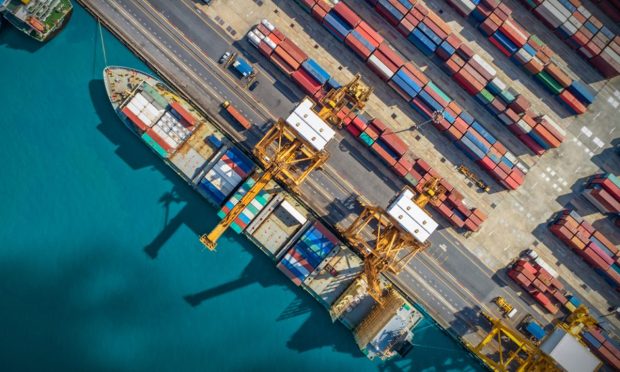Retailers Outline Supply Chain Strategies in Bid to Win Customers

For months, consumers have been hounded by headlines urging them to think about their holiday shopping early to avoid the myriad issues plaguing supply chains around the world. And now that “early” has become synonymous with “now,” retailers are using their holiday supply chain strategies as a tool to convince consumers that they’re the ones who can guarantee the timely arrival of gifts.
Walmart, for example, has a blog post written by Joe Metzger, executive vice president of supply chain operations for Walmart U.S., detailing the various steps the box store giant has taken in the past several months, including chartering ships and diverting shipments to less congested ports; hiring thousands of supply chain workers and truck drivers; and rerouting inland shipments “utilizing less conventional transportation methods” to avoid rail delays.
Target published a similar post last week that summarizes various investments the company has made this year to improve supply chain operations, including four new sortation centers, two new distributions centers, and hiring 30,000 new year-round supply chain employees.
Both companies have also committed to moving more goods at night, according to President Joe Biden, who last week said the Port of Los Angeles would start processing ships 24 hours per day, seven days a week to help ease the backlog of over 60 container ships waiting to unload.
“This is a big first step in speeding up the movement of materials and goods through our supply chain,” Biden said. “But now we need the rest of the private sector chain to step up as well.”
Taking to the Sky
Other companies, seeing the lines at ports grow longer, have resorted to air freight to try to bypass some of the issues. Executives at Nike, which has also seen weeks of lost production because of factory closures in Southeast Asia, said they’re accelerating their use of air transportation as transit times from China to North America double from pre-pandemic levels.
See: Factory Closures Cause 10-Plus Weeks of Lost Production for Nike
Still, this tactic isn’t without its own issues. American Shipper has reported that the rent on a 747 freighter for a single flight from China to Chicago is now $1.5 million to $2 million, compared to about $500,000 two years ago. An aircraft charter company also told the Journal of Commerce that a customer paid $2.5 million to charter a flight carrying mostly garments and electronics from Vietnam to the U.S.
In July, Salesforce projected that costs across the retail supply chain would increase by $223 billion in the second half of the year, with logistics companies adding $163 billion because of a shortage of shipping containers and capacity on ships.
“Retailers are really starting to get scrappy, really trying to get creative,” Rob Garf, vice president and general manager of retail at Salesforce said.
Read more: Retailers Set For Another Unprecedented Holiday Season
Preventing Higher Spending
Even with retailers pulling out all stops to get merchandise in the hands of consumers, many observers expect a lot of empty shelves during the holiday season and fewer discounts as companies try to protect their profit margins.
Jack Kleinhenz, chief economist for the National Retail Federation, said he remains concerned about rising inflation and slower supply chains despite two consecutive months of increased consumer spending, a possible foreshadowing of things to come.
“Spending might have been higher if not for shortages of items consumers are eager to purchase,” Kleinhenz said.
Related: Retail Sales Up 0.7% in September as Inflation Continues to Rise
